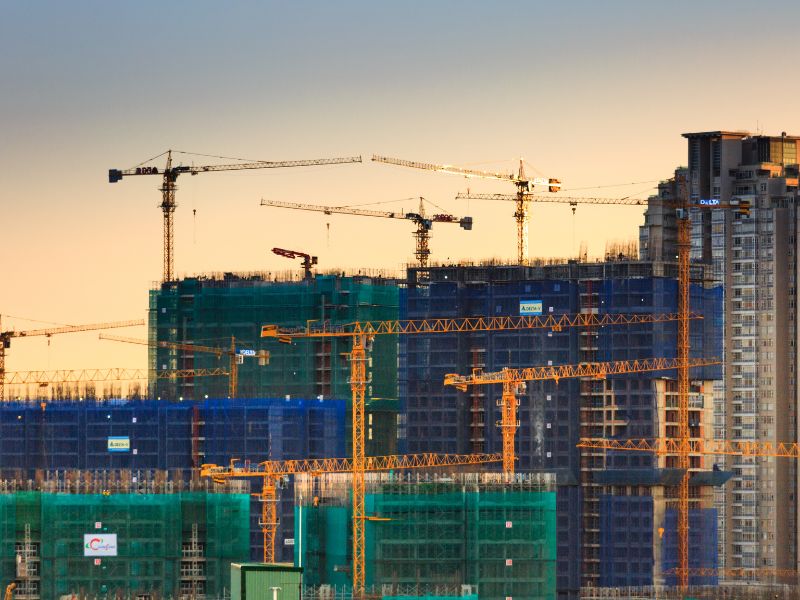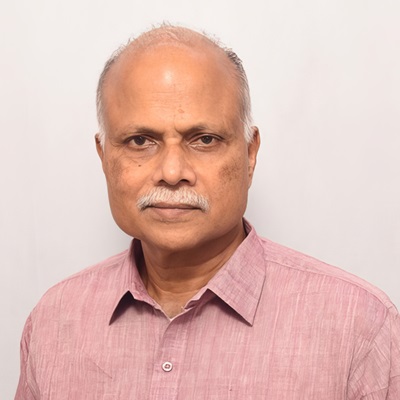.png)
To Counter Slowdown, India Needs Bold Approach, Must Build Entire New Cities Not Just Roads
India’s economic slowdown calls for a bold strategy beyond infrastructure—building new cities to drive investment, job creation, and urban-led growth. By leveraging public-private partnerships, planned urbanisation can unlock economic potential, enhance productivity, and ensure sustainable expansion.


T.K. Arun, ex-Economic Times editor, is a columnist known for incisive analysis of economic and policy matters.
January 30, 2025 at 12:12 AM IST
India’s economic growth has slowed, and there is no automatic booster in sight. Capacity utilisation in the manufacturing sector has been stuck around 75% for nearly a decade. That means that the industry has no desperate urge to add to capacity in the near term. That leaves infrastructure as the major site of investment.
In the absence of any generalised policy of public-private partnership in infrastructure, the government remains the prime mover in the sector. While its budget outlays on capital expenditure have been the highest ever, spending has been tardy, contributing to the economic slowdown.
At the state level, a new political economy of welfare transfers is taking hold. State after state is rolling out monthly cash payments to assorted and large segments of the population. These have the merit of boosting consumption, and lowering household indebtedness, which had depressed net household financial savings to a 47-year low of 5% of GDP in 2022-23, and to 5.3% of GDP in 2023-24. Investment, much more than efforts to boost consumption is what the economy needs to really boost growth.
Increased outlays on transfer payments and constitutional arrangements that limit their ability to borrow as they please will erode the ability of state governments to spend big on infrastructure. The central government will have to pick up the slack.
That does not mean that the Centre has to boost its capital expenditure outlays above the 3.34% of GDP budgeted for the current fiscal. The Centre’s interest payments already exceed the capital expenditure outlay. It cannot realistically convince global investors of sound macroeconomic management, if it does not show some progress towards fiscal consolidation, indicated by the fiscal and primary deficit shares of GDP.
Tax collections have been growing well above the nominal GDP growth rate, thanks to better administration and bountiful capital gains booked on the stock market. However, government revenue growth will not suffice to allocate significant amounts to capital expenditure.
It’s policy, stupid!
The government does not have any great leeway to borrow and yet it has to ensure that investment goes up in the infrastructure, how can it achieve these conflicting goals? It has to first stop financing the entirety of infrastructure investment, and, instead, formulate policy to incentivise the private sector to invest in infrastructure. That means, yes, reviving the public-private partnership model that had driven up gross fixed capital formation as a share of GDP to above 33% during the Congress-led United Progressive Alliance regime over 2004-2005 to 2013-2014.
The present government has been loath to formally revive PPP models, because it had vilified the model to paint the UPA government as being obsessively corrupt. Prof Ram Singh of the Delhi School of Economics has studied PPP projects, particularly in building roads. He finds, even if provisionally, that PPP projects tend to have shorter delays but have higher cost-overruns, but these higher costs are mitigated over time by lower expenses on maintenance and better quality of the roads built, especially if the PPP road projects awarded are tolled, the tolls are collected by the private developer, who also has the responsibility to carry out maintenance. Mumbai and Delhi airports, road and township projects such as the Yamuna Expressway connecting Delhi and Agra, and ultra-mega power projects are examples of PPP projects that have been delivered.
What kind of projects should be taken up under PPP? A most desirable variety would be building new towns and redeveloping existing towns. India’s level of urbanisation, measured as the proportion of the population living in towns, is probably around 35% -- we don’t know for sure because we have not had a Census since 2011. The world average is about 50%. China is two-thirds urban. No country has prospered without urbanisation accompanying and driving that growth process.
China built thousands of towns and townships during the prolonged period of its double-digit growth. Demand for, and therefore the output of, steel, cement, glass, ceramics, power cables, towers, that go into building a town create capacity additions.
Competition among suppliers improves productivity. Infrastructure gets built. Rural labour moves to towns to become construction workers and witness an increase in income. Migration of rural labour into construction tends to create relative shortages of labour in rural areas and push up rural wage levels. Consumption rises and poverty falls. Accelerating growth calls for increased urbanisation in India.
By 2040, India’s population is projected to be 162.58 crore. If half that population is to be urban, India’s urban population would need to grow by 270-300 million. Considering that India’s urban population at present is around 500 million, that would mean an addition of up to 60% of the extant population. It would be madness to expect those many people to squeeze into India’s existing urban spaces. India will need to build new towns spanning 16,000-20,000 sq km, depending on the population density desired.
This could be built as less than 20 megacities or as dozens of smaller towns. The Special Economic Zone policy was the nearest that India came to creating a policy for new urbanisation. In that, the size of a new SEZ was limited to 50 sq km. The 100 smart cities that Prime Minister Modi’s campaign promised in 2014 soon transmuted into a plan to make 100 existing towns smart. That does not help in creating additional urban space.
Creating new towns calls for coordinated planning between the Centre and the states. The states would have to do the zoning, to identify areas for setting up new towns. The Centre could chip in with financial support and connectivity to existing highways and rail networks, as well as with regulatory approval and planning for new airports, and universities.
The modern knowledge economy would be driven by towns that host at least one world-class university and are connected to other towns, if not to the outside world, with the means of fast transport, whether by high-speed trains or planes. While the airport infrastructure need not burden the Centre, the regulatory apparatus, including air traffic control, must be mobilised and deployed by the Centre.
New towns have the advantage of being built from scratch. These can incorporate proper town planning: create places where people can live, work and play without long commutes. Buildings can be laid out to prevent the formation of heat islands. Parks, pools, playgrounds and stadia can be planned. Private residential areas can have public housing and low-cost rental housing in the private sector nearby.
Roads and buildings can be designed to prevent the formation of ghettos and facilitate policing and firefighting.
Where will state governments get the money to build all this? They do not need to raise the funds. Their job would be to zone, plan, bring together developers and convince farmers and others that if they pool their land to build new townships, they would be rewarded with a share of the developed, urban property, as predetermined and agreed upon.
During his previous term as chief minister of Andhra Pradesh during 2014 to 2019, Chandrababu Naidu had obtained land to build his planned new capital Amaravati precisely in this fashion. It is a different matter that his successor scuppered this plan. Given this experience, farmers would need iron-clad, three-party contracts with developers and the government as the other parties, to release land for new towns. Such plans can be executed.
Where would developers find the money from? Real Estate Investment Trusts, other ETFs and some private equity would have to be roped in. If they carry credibility, the world’s savings would flood in, to build the new centres of growth to propel the world’s fastest-growing economy.



